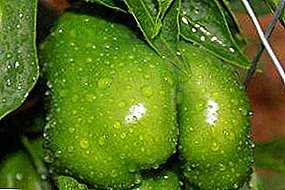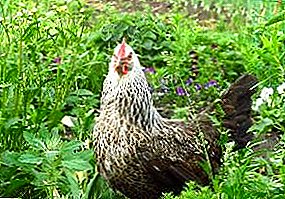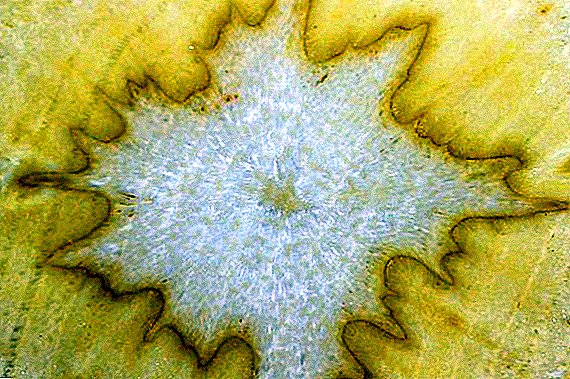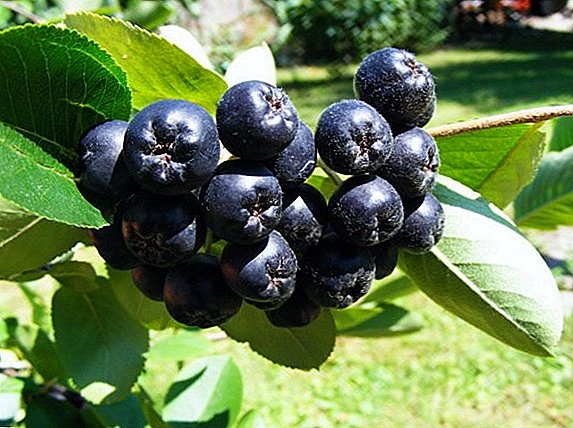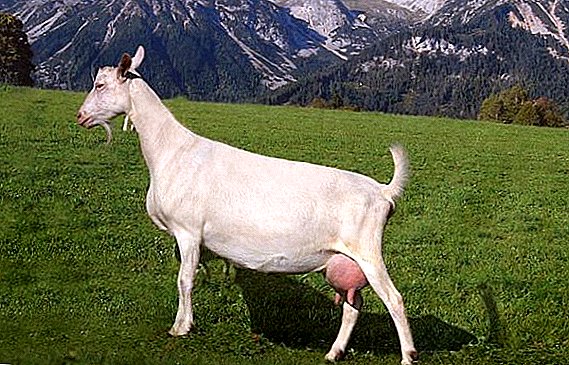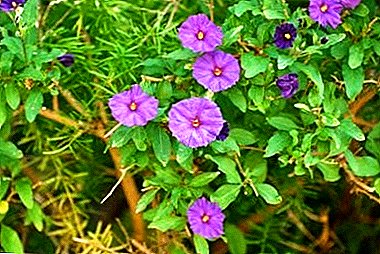 Unusual beauty of its flowers and at the same time repelling the smell of succulent stapelia attracts many gardeners. Let us consider in more detail the rules of care and transplantation, reproduction of the stocks, as well as features of flowering.
Unusual beauty of its flowers and at the same time repelling the smell of succulent stapelia attracts many gardeners. Let us consider in more detail the rules of care and transplantation, reproduction of the stocks, as well as features of flowering.
Biological features
Stapelia - perennial succulent of the Lastovnev family. It grows up to 60 cm in height. In nature, it is common in shaded areas near water bodies, on mountain slopes. Homeland - Southwest and South Africa. It has tetrahedral fleshy shoots without leaves.
On the edges there are non-sharp teeth, due to which the plant is often confused with a cactus. The shoots are usually green, sometimes with a violet-red hue, which manifests itself in the sun. The flowers at the stocks are pubescent, pale colored or variegated in size from 5 to 30 cm. They grow on bent pedicels at the base of the shoots, resemble a starfish. 
Transplant after purchase
After the purchase it is necessary to transplant the flower, since the substrate in which the plant is sold is not suitable for permanent maintenance. In addition, the flower requires a large capacity for growth and development. Stapelia removed from the pot along with the substrate, inspect the roots, if necessary, remove dry and damaged.
Important! The main condition for transplantation is not to damage the root system. If it is not possible to remove the plant easily, it is better to cut the pot.
Then the slipway is placed in a larger container and filled with a new substrate. Strongly sandy soil with acidity between 5.5 and 7 is suitable for it. To prepare the mixture, you can take two parts of sod land and one part of sand. Also for these purposes you can purchase a substrate for cacti in the store and mix crushed charcoal to it. After transplantation, the flower should be watered and not touched for 3-4 days.
Succulents that can be grown at home include air cream, zamiokulkas, agave, aloe, kalanchoe, echeveria, nolina, faty, hatiora, epiphyllum, havortiya, lithops.
Further care and growing conditions
Stapelia refers to unpretentious plants, as in nature lives in fairly harsh conditions.
Location and lighting
The best is diffused lighting, but the pile building feels comfortable in a barely darkened and well-lit place. The only thing that should not be allowed is direct sunlight, as burns can appear on the shoots. The best place for the stocks - western and eastern windows.
Temperature
As a native of hot Africa, this succulent is thermophilic, therefore from spring to autumn it is necessary to maintain the temperature at 21-27 ° С. Since November, it is lowered to 15-18 ° C. In winter, the temperature should not fall below 14 ° C.
Did you know? Stapelia are known by such names: Zulu giant, starfish flower, star cactus, giant toad flower.
Watering
Water the plant abundantly before full moistening of the substrate. By the next watering, it should dry out completely. During the growing season, the plant is watered more often than in the winter, when irrigation is significantly reduced. Avoid overflows, as a result, the plant may die.
Humidity
As with all succulents, moisture for the building berth is not critical, and it does not need additional humidification.
Top dressing
Fertilizing the stocks in the spring-summer period with potash fertilizers. This should be done no more than once every two weeks.
Succulents can be used in the florarium - a living mini-garden in the glass.
When and how to bloom
The period when the stapelia blooms is impossible to miss: a sharp unpleasant smell spreads throughout the room. This is due to the fact that in nature flowers are pollinated by scavenger flies, which this smell attracts. Flowering occurs in the summer and lasts about two weeks. Each flower lasts about three days, and then closes and falls away. 
Diseases and pests: prevention and treatment
All sickness diseases occur due to waterloggingTherefore, the main thing is to follow the irrigation regime. Of the pests it affects the aphid, spider mite and mealybug. Such plants are treated with insecticides, for example, "Fitoverm", "Decis", "Aktellik", "Fufanon" or "Inta-vir".
In general, the stapelia is very resistant to diseases and pests, as it grows in nature under rather harsh conditions.
Stapelia does not bloom
Often, the owners of this succulent raises the question why the stapelia does not bloom. The reasons may be insufficient lighting, high temperature in winter, too abundant watering, excess or lack of fertilizers and their wrong composition. In order for the stapelia to blossom, it is only necessary to follow the rules of care described above.
Important! For the appearance of flowers do not abuse fertilizers, especially nitrogen.

How often do the transplant
Young plants need repot every year in the spring, because it grows fast enough. When transplanting adult plants, which occurs every 2-3 years, old shoots are removed from the center. Perennial plants are not transplanted, but only once a year they change the top layer of soil and remove old shoots. Shallow pot must be filled to one third by drainage. A mixture of turf soil and sand (2: 1) will be suitable as a substrate.
Methods of reproduction at home
Reproduction occurs two ways: cuttings and from seeds.
Cuttings
The stalk is cut with a sharp knife, the cut is treated with cinnamon or activated charcoal. Before rooting the stockpile stalks, it is necessary to gently heave, and then land in a mixture of sand and peat. After rooting, transplanted into a permanent pot with a ground for succulents. 
Growing from seed
To grow a succulent seed, you must wait about a year for the fruit to ripen. After collecting the seeds, the fluff with which they are coated is removed and soaked in a solution of potassium permanganate. They are sown in sandy soil (one part of sand and one part of peat) by laying it out on the surface of the soil, pressing it slightly inwards. Capacity covered with glass or film to create the greenhouse effect. It is necessary to maintain the temperature at the level of 20-25 ° С, to prevent overheating.
Shoots appear after 1-2 weeks. Slightly grown seedlings (about 5 cm) dive in separate containers with the same substrate as for adult plants. A year later, young plants can be transplanted into a permanent pot by transshipment.
Did you know? The flowers of the golden-purple staples (S. flavopurpurea) come from Namibia, unlike their smelly relatives, exude a waxy fragrance.
If such a nuance, like a peculiar smell, does not frighten you, and the unusual appearance attracts attention, the building block will become a real decoration of the house. Having studied the simple care at home, admiring her photo, you can safely buy this succulent.


